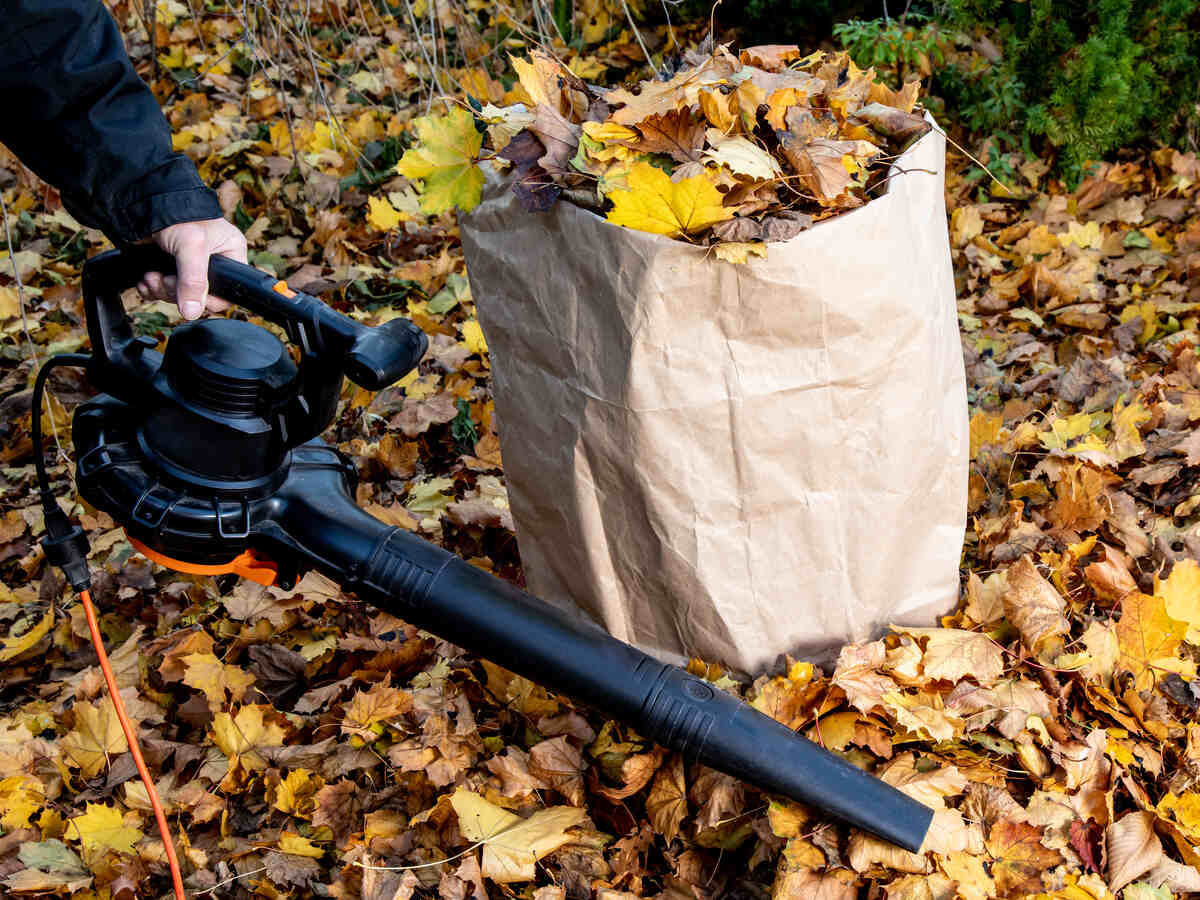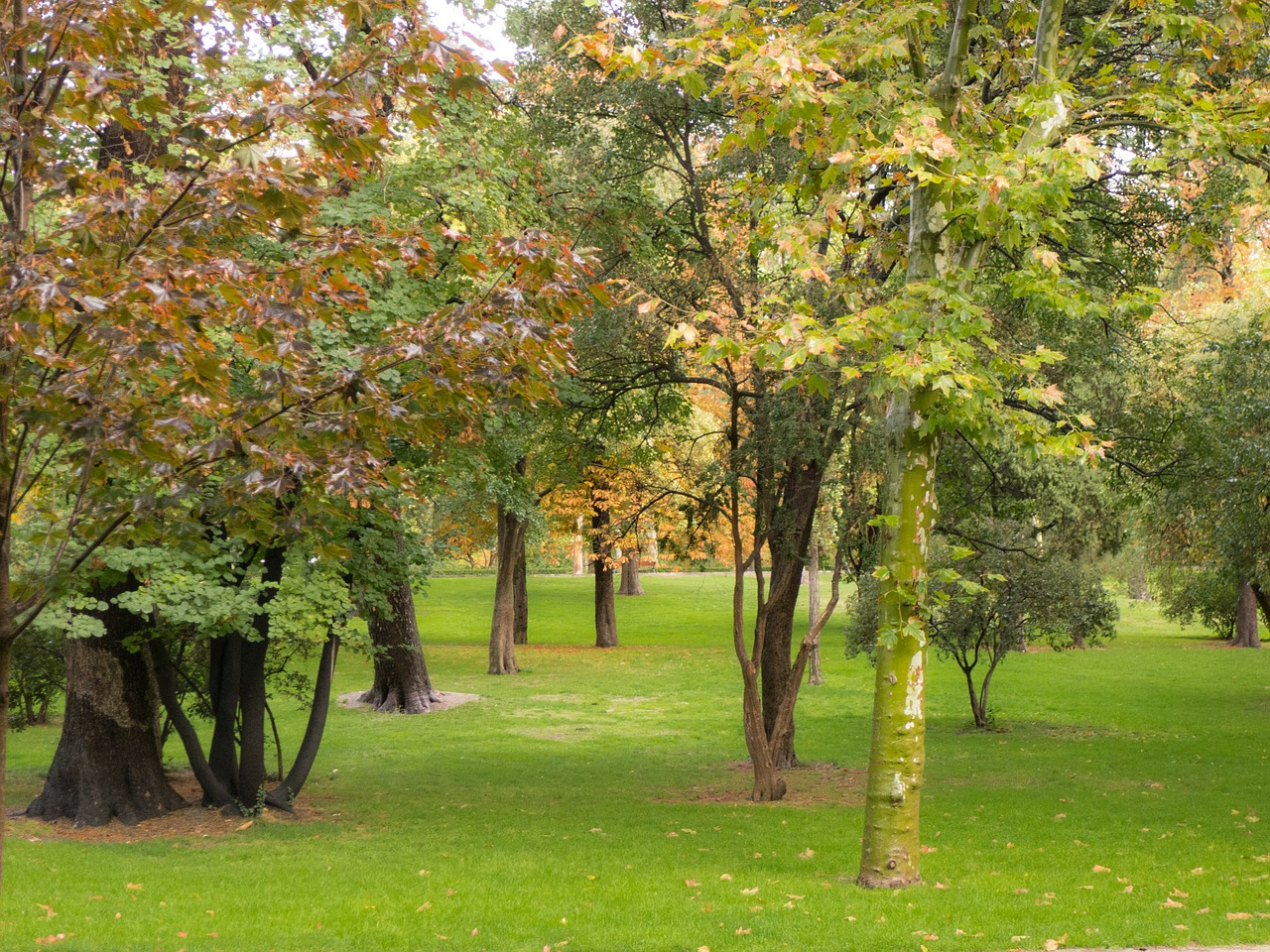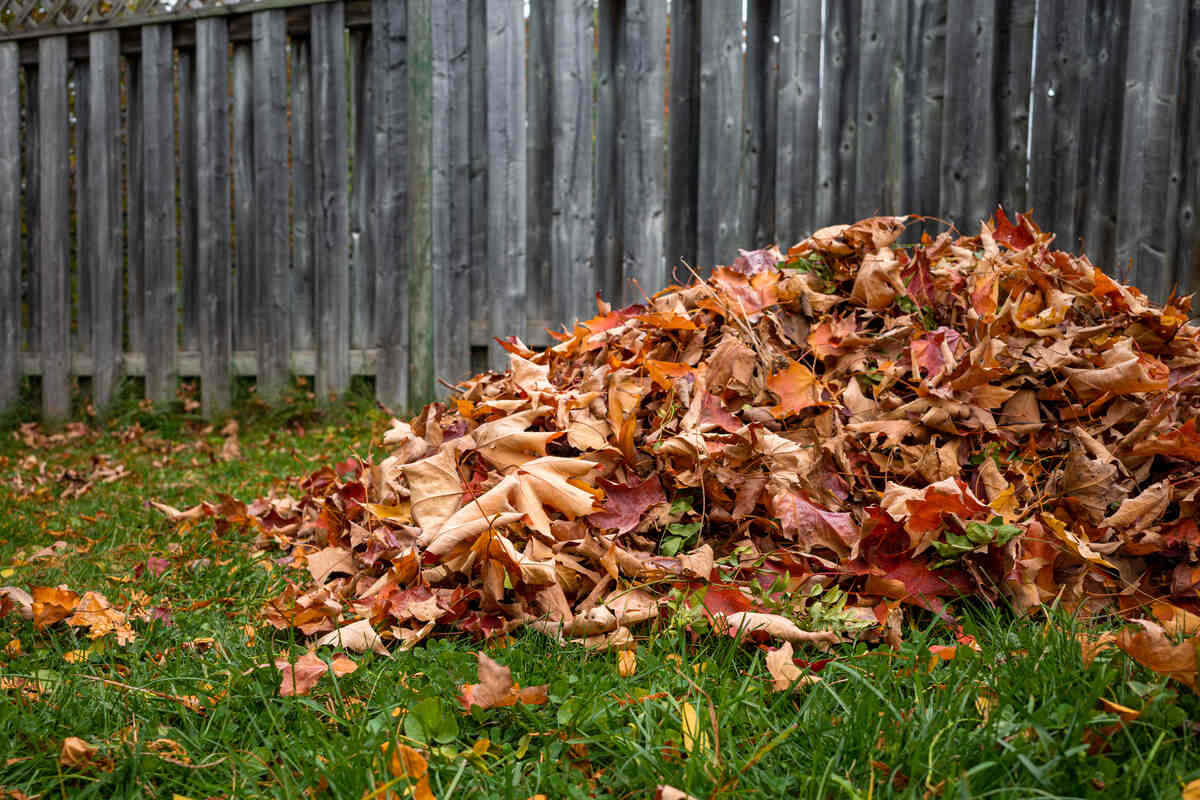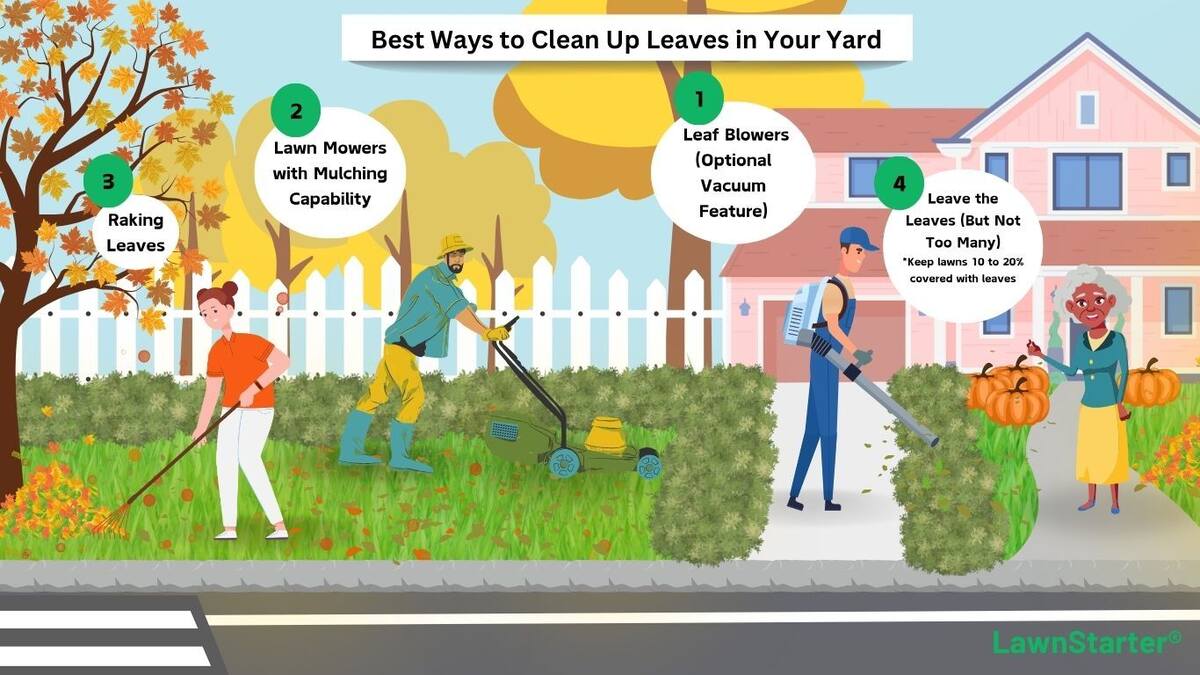
Cleaning up leaves is a classic annual chore that everyone loves to hate. Still, it’s really important, especially for a tidy and pest-free lawn. So, here are the best ways to clean up leaves in your yard.
For small yards, raking into manageable piles works great. Bigger yards? Use a leaf blower or a lawn mower with a mulching feature; they can save you lots of time and effort.
You can also turn those leaves into mulch or compost, which will benefit your garden. And to keep the mess under control, use leaf bags or tarps to gather everything up.
Remember, your best leaf removal method depends on your yard’s size, the number of trees, and your own preferences. So, let’s take a closer look at the five best options and the pros and cons of each:
1. Leaf Blowers (Optional Vacuum Feature)
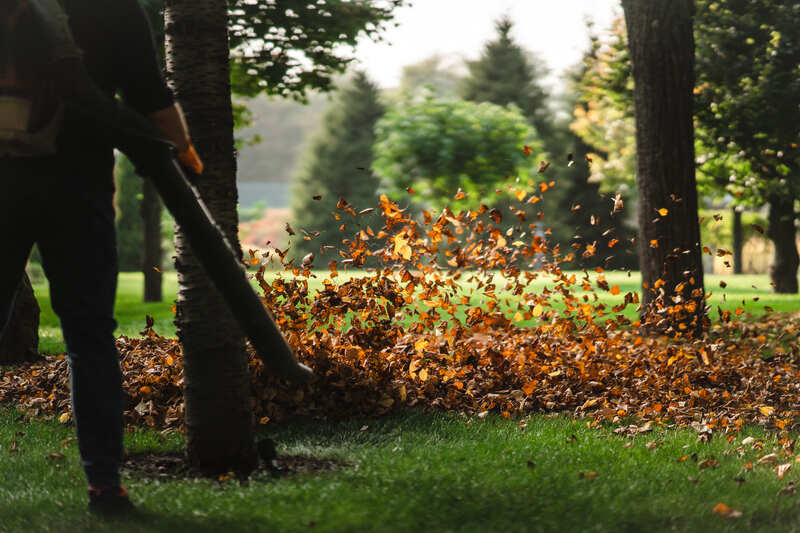
Try a leaf blower if you want some speed and a sprinkle of fun while cleaning up your yard. This power tool helps you clear leaves quickly and works for both small and big yards.
Yes, a leaf blower can be noisy, but it beats raking any day. Just point your blower at the leaves, and it will blow them into a neat pile with a strong gust of air.
Note: Leaf blowers and leaf vacuums are different, but most modern tools combine both features. A blower piles up leaves while a vacuum sucks them up using a bagging system. Plus, they may include a mulching feature to turn leaves into fine pieces for your compost pile or garden.
| Pros | Cons |
| ✓ Multi-Surface Helper: Leaf blowers are perfect for clearing leaves from driveways, patios, and grassy areas. They even handle tight corners and hard-to-reach spots (like around shrubs or gutters) with ease, making your cleanup super easy. | ✗ Noise Level: Leaf blowers can be pretty loud. Check your local area’s regulations on noise levels, as some places restrict their use during certain hours. |
| ✓ Quick Cleanup: A leaf blower can drastically reduce the time it takes to clear your yard of leaves. Powerful blowers can get the job done faster. | ✗ Air Pollution/Greenhouse Gas Emissions (Gas-powered models): Be aware that gas models produce emissions that contribute to air pollution and global warming. |
| ✓ Variety of Models: There are different types of leaf blowers – handheld, backpack, and walk-behind models – to suit varying needs. | ✗ Power Source: Depending on the model, you might find yourself tangled in an electric cord or needing to recharge a battery. Gas models require proper fuel handling. |
| ✓ Less Effort: Using a leaf blower is less physically demanding than raking, which means more work with less effort. | ✗ Creates Dust and Debris Clouds: If it’s a dry day, leaf blowers can kick up dust and other small particles, which may cause respiratory discomfort. |
Want a leaf blower to maintain your backyard? Check out our leaf blower reviews, pricing guides, and a guide on how to use a leaf blower:
- Best Backpack Leaf Blowers
- Best Electric Leaf Blowers
- Pricing Guide: How Much Does a Leaf Blower Cost?
- How to Use a Leaf Blower (Step-By-Step Guide)
2. Lawn Mowers with Mulching Capability
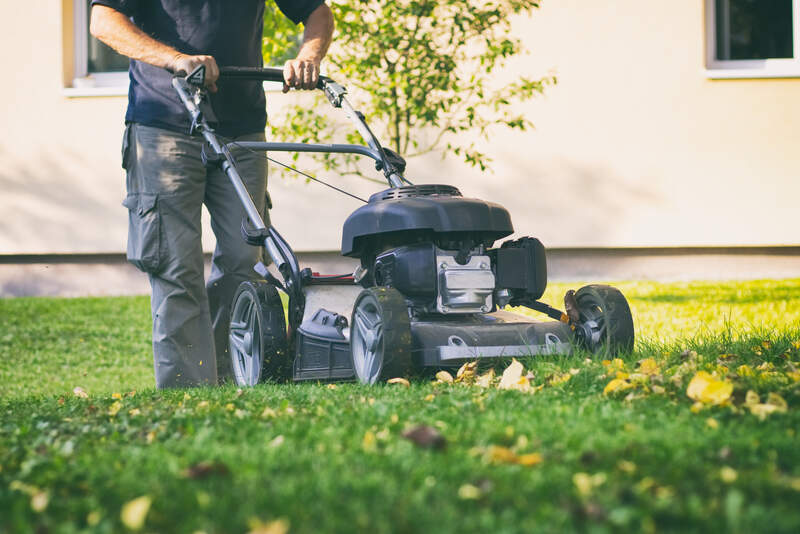
A lawn mower is one of the best ways to clean up leaves on lawns. Why break your back raking when your trusty lawn mower can handle it? Just run over the leaves a couple of times, and your mower will chop them into little pieces, ready to be used as mulch or compost for the lawn.
Make sure the shredded leaves fall between the grass blades, and don’t suffocate your turf.
Note: If you have lots of trees and a thick carpet of leaves, use a special mulching mower or attach a mulching blade to your regular mower. Set the mower height to about 3 inches and avoid wet leaves (they’re the worst).
| Pros | Cons |
| ✓ Time and Effort Saving: One action to mow and mulch. | ✗ Potential Smothering: Too much leaf mulch can suffocate your grass. |
| ✓ Natural Fertilizer: Mulched leaves provide nutrients like nitrogen to the soil as they decompose, acting as a natural fertilizer for your lawn. | ✗ Equipment Limitations: Some mowers may not be as effective at mulching leaves, requiring multiple passes or special mulching blades. |
| ✓ Environmentally Friendly: No transportation or disposal of leaves. | ✗ Hidden Objects: Leaves can hide objects that could damage the mower or cause injury if hit. |
| ✗ Restrictions: Not suitable for leaves on patios, driveways, or in flower beds. |
Have you made up your mind about using a leaf blower for your yard? Check out this list of top options: Best Mulching Lawn Mowers
3. Raking Leaves
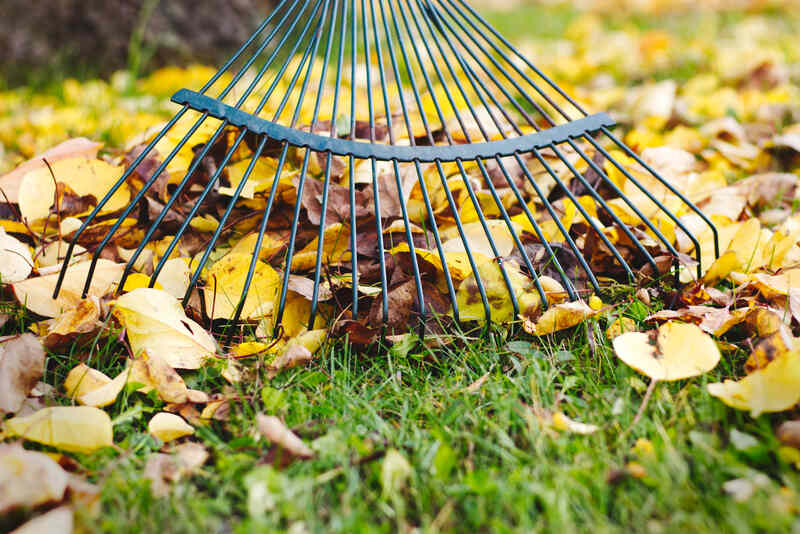
Using a rake is the old-school – and therefore reliable – method, especially for small to medium-sized yards. Choose a big, sturdy rake, preferably with an adjustable width, to make it easy to transfer leaves into leaf bags or a wheelbarrow.
Raking is good old manual labor and can take some time, but it’s perfect if you don’t have too many trees or your yard isn’t large.
| Pros | Cons |
| ✓ Physical Exercise: It’s an excellent upper-body workout. | ✗ Time-consuming: It requires a lot more effort and time than mechanical methods. |
| ✓ All-Terrain: Ideal for trees close to the house, flower beds, tight spaces and corners – places a lawn mower may not reach or potentially harm. | ✗ Labor-Intensive: It can be hard work, particularly for large areas or heavy leaf coverage. |
| ✓ Child-Friendly: Your kids can help (or jump into the piles). | ✗ Physical Strain: If you’re not careful, this method can cause blisters on your hands and strain your back. |
| ✓ Cost-Effective: All you need is a rake and garbage bags. | |
| ✓ Quiet Operation: It allows you to work in silence and avoid disturbing your neighbors. |
Is raking the best option for your leaf cleanup? Find out more:
4. Leave the Leaves (A Natural Approach)
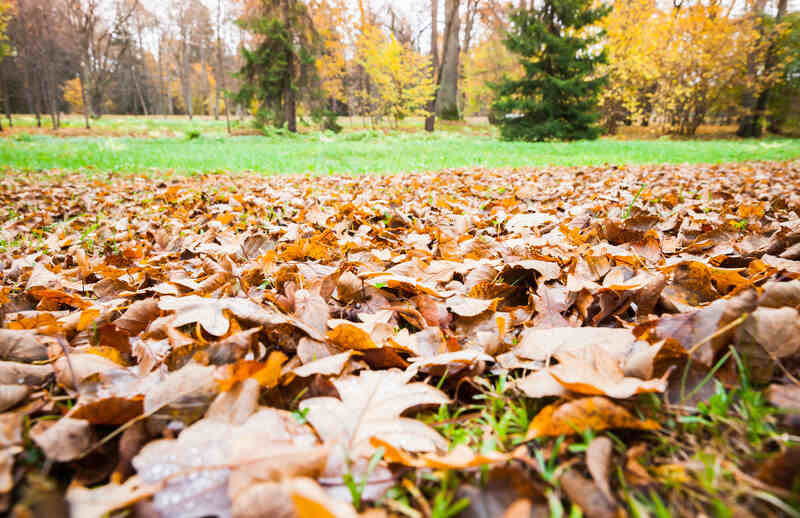
Depending on the health of your lawn, you might consider leaving the leaves be. This concept encourages letting nature take its course. However, the leaves shouldn’t smother the lawn (a 10% to 20% leaf coverage is generally acceptable.)
Note: The U.S. Department of Agriculture suggests that a limited amount of leaves can provide important winter habitats for small beneficial insects, birds, wildlife, and microorganisms.
If your leaf blanket is not too dense and you don’t mind having an all-natural look in part of your yard over the winter, this might be an option worth considering. Plus, it’s definitely the least labor-intensive route.
| Pros | Cons |
| ✓ Supports Wildlife: Fallen leaves offer shelter for small creatures and insects. | ✗ Ground Cover: Your grass might be starved of light and air, causing problems in the spring. |
| ✓ Enriched Soil: Leaves slowly break down into organic matter, enriching the soil. | ✗ Potential to Harbor Pests: Attract insects, fungal diseases, or pests if not kept in check. |
| ✓ Low Effort: Minimal work involved. | ✗ Aesthetics: Some homeowners may find a yard covered with leaves unsightly. |
5. Hire a Leaf Removal Pro
Dealing with fallen leaves in your yard may sometimes feel like a never-ending annual challenge. Whether you choose to mulch with a lawn mower, traditionally rake up your leaves, or go for speed and excitement with a leaf blower, all methods have their merits.
Yet, if this feels like too much work to balance alongside your busy schedule, remember there is an easier route. LawnStarter connects you to the best landscaping pros near you – a pro can take care of the leaf cleanup efficiently, saving you time and effort.
Main Photo Credit: Luminita Toma / LawnStarter
